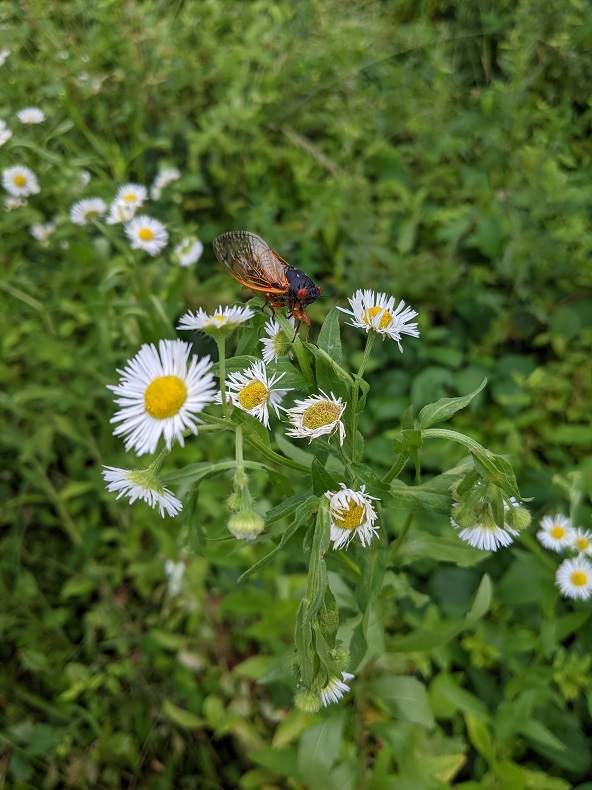
Earlier this summer I went on a bee hunt.
I’m talking about native bees, not honeybees. In the words of Sam Droege, the guy leading the bee hunt, “If your model of ‘bee’ is the honeybee, you need to forget nearly everything you know about bees.” Droege works at the USGS Native Bee Inventory and Monitoring Lab in Maryland.
Honeybees were brought to the U.S. from Europe. They’re basically livestock, Droege says. Thinking that a honeybee is a good representative of bees is like thinking a cow is a good representation of mammals. A cow is a fine animal. But knowing things about cows is not going to tell you much about squirrels or lemurs or bats.
The bee lab concerns itself with the more interesting and diverse native bees. The U.S. has some 4,000 species of native bees. They don’t make honey. They don’t do waggle dances. Most are solitary. Some are striped black and yellow, but a lot aren’t. Some are a brilliant metallic green.
A group of local science writers visited the lab for a tour, and Droege put us to work. He showed us how to swish a net and catch a bee, then transfer it into a tube of soapy water. Each pair of us was assigned to look for bees visiting the flowers of either annual fleabane, the cute daisy relative pictured above, or elderberry. He wants to know which supports more bees.
Droege has a hypothesis: while elderberry seeds are included in a lot of supposedly pollinator-friendly seed packets, he doesn’t have a good feeling about it. “I think it’s – personally, because I hunt bees all the time – a crappy bee plant,” he said.
We wandered through the paths mowed between the meadows, admiring the crop of poison ivy and wondering how many ticks were climbing up our pants. I swished the net past a bee on a flower and slammed the rim down to the ground; it climbed to the top of the net, like Droege said it would, and my friend Kate got it into the tube. Later we caught another. The fields were filled with plant-swatting science writers.
We caught bees and, as it turned out, ticks. We were just a small part of the answer to this question, and I haven’t heard the answer yet. A few bees met their end, and science advanced.
Photo: Helen Fields